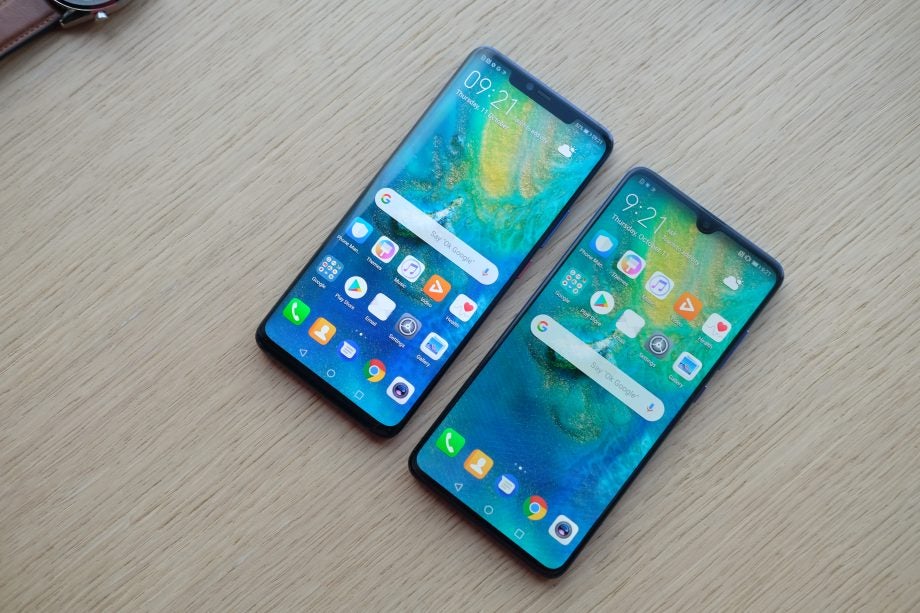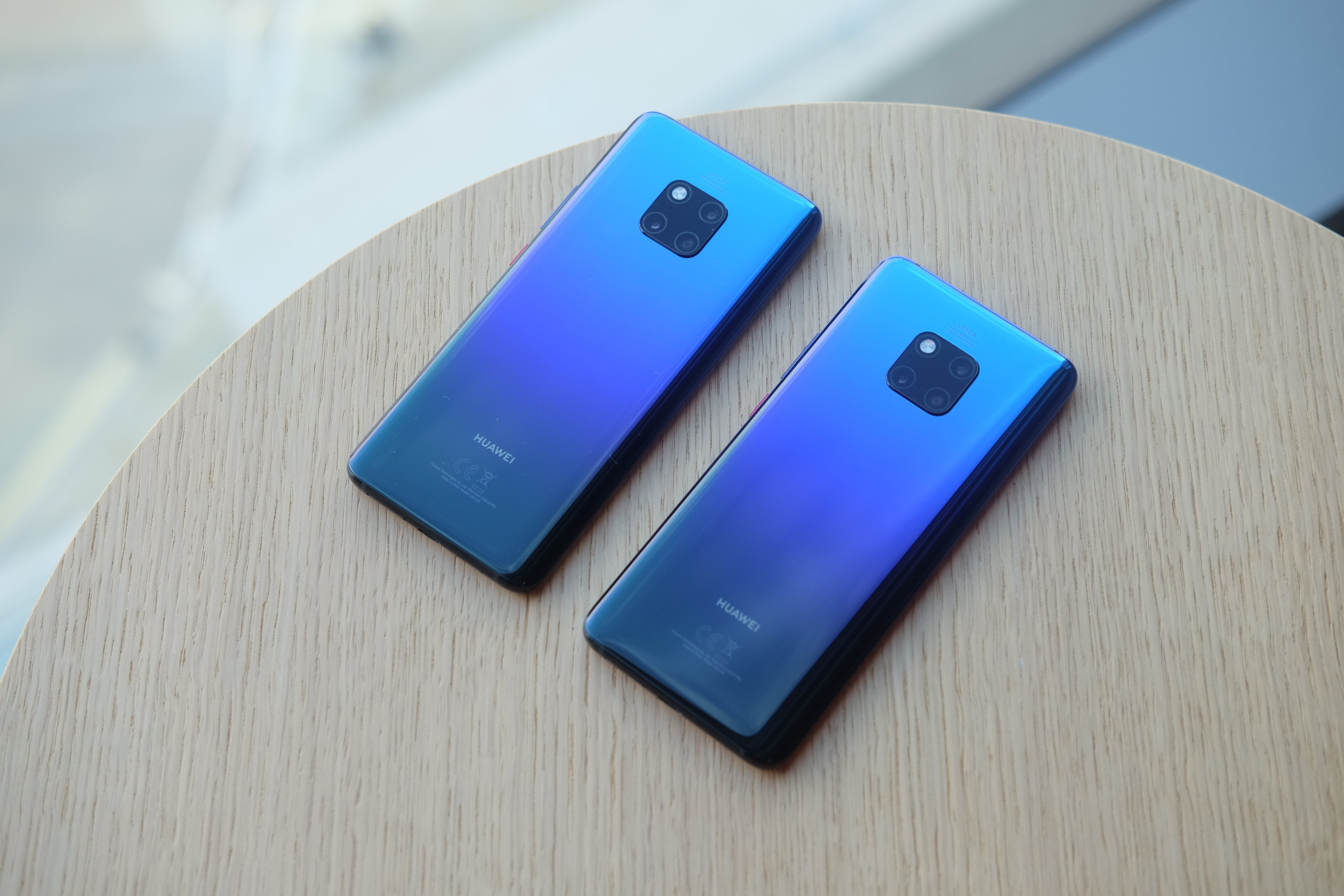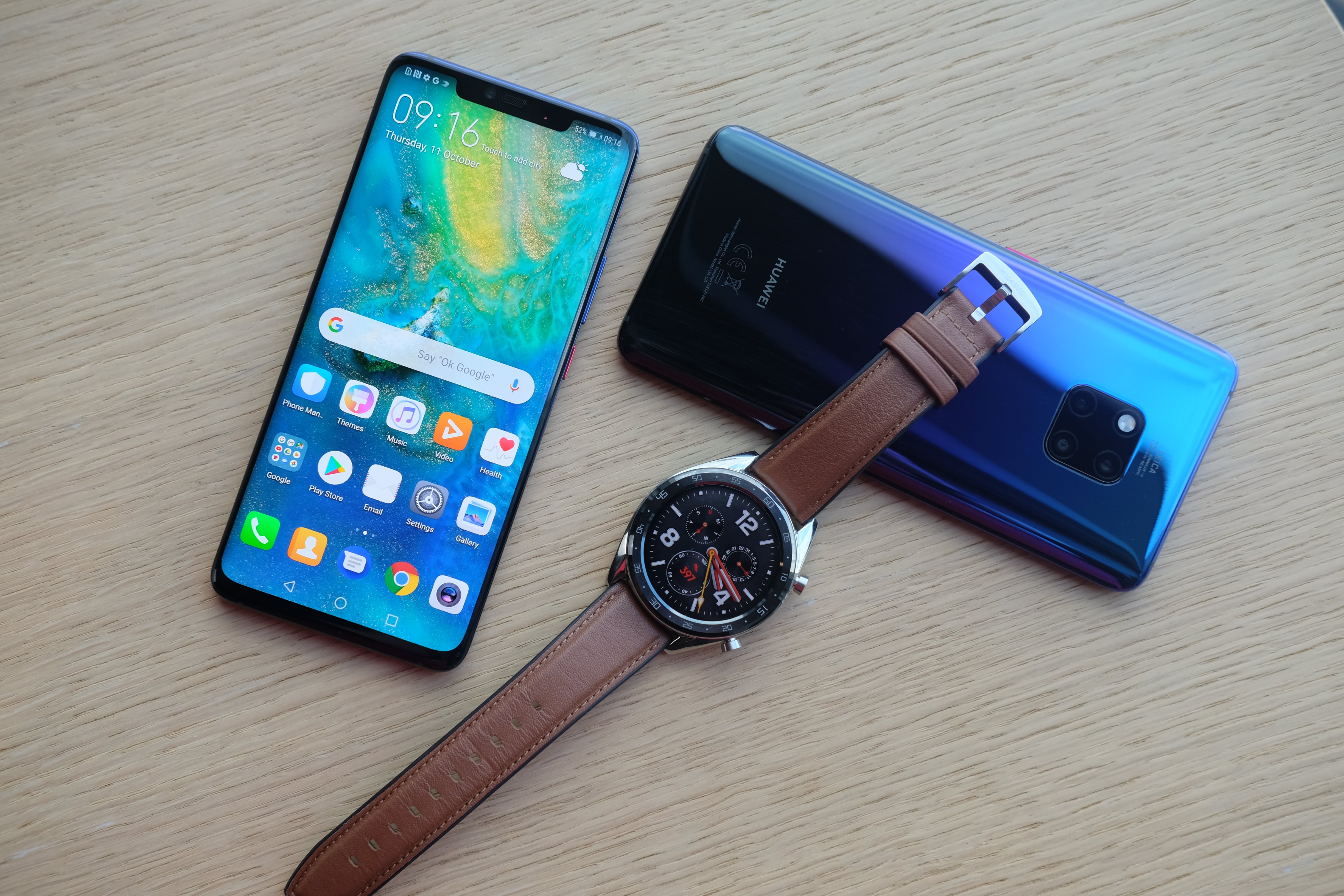Huawei Mate 20 vs Mate 20 Pro: Should you go Pro?

Mate 20 vs Mate 20 Pro: As big a gap as last year?
With Huawei’s new 2018 phablets now formally announced, we can see just what the new Huawei Mate 20 and Huawei Mate 20 Pro bring to the table.
When Huawei launched the Mate 10 and Mate 10 Pro last year, it introduced us to its shiny new Kirin 970 processor, the first mobile chipset packing a dedicated NPU (neural processing unit); designed specifically with AI-based tasks in mind. This year both the Mate 20 and Mate 20 Pro showcase one of the market’s first 7nm chipsets in the Kirin 980, which happens to boast an enhanced dual-NPU and offer a gamut of other benefits too.
In truth, both the Mate 20 and Mate 20 Pro have a lot in common. Like last year, screen size and technology differ along with battery capacity and the inclusion of a handful of different sensors on the Pro model, but beyond that, you can expect a decidedly similar top-tier Android phablet experience; one that Huawei has worked hard to swiftly cultivate in recent years.
Related: Best Phablet
Mate 20 vs Mate 20 Pro: Do they look different?
While it’s fair to say that Huawei has taken a fairly holistic approach to improving its smartphones more recently, design is an area where the brand has come on in leaps and bounds.

Even before you consider the premium Porsche Design partnership devices we’ve seen in recent times (like last year’s Huawei Mate RS), the brand’s flagship phablet line has evolved from a series of unassuming metal slabs into expertly crafted curved glass beauties. The same is true of both the Mate 20 and Mate 20 Pro, which offer rounded glass forms in an array of eye-catching hues, no doubt inspired by the likes of the gradient-backed Twilight Huawei P20 from earlier this year.
The Mate 20 Pro’s OLED display also curves away at the edges while the standard Mate 20 is the first of the company’s phones to offer a ‘Dewdrop’ notch – a small rounded triangle cut-out that barely encroaches on the screen at all, designed explicitly to house the phone’s 24-megapixel front-facing camera.
The different aspect ratios between these two phones mean the Mate 20 Pro’s smaller 6.39-inch panel lends the phone a much narrower and more ergonomic footprint than the more sizeable Mate 20 (72.3mm vs 77.2mm wide), although both phones weigh about the same.
The standard Mate 20 features a fingerprint sensor ever so slightly inlaid on its back, just like last year’s Mate 10 Pro, while the Mate 20 Pro leaves the design feature out completely. It instead opts for a more cutting edge in-display fingerprint sensor, making this the first phone to bring the technology to the table on a truly mass market device (it was previously found on niche handsets like the Vivo Nex S and the aforementioned Huawei Mate RS).

Related: Best Phones
Expect superior water resistance from the IP68-certified Pro model, but those after a headphone jack will likely side with the marginally less hardy standard Mate 20, especially as Huawei isn’t including a USB-C-to-3.5mm headphone jack adapter in the Pro’s box this time around.
The rounded square element found all over these phones’ marketing material and in physical form on the back of both devices is actually a new triple-camera array. Aside from a resolution bump on the Pro, you get a similar imaging hardware on both devices, but more on that later.
Mate 20 vs Mate 20 Pro: How do their specs and features compare?
As you’ll spot from the comparison table below, whichever Mate 20 grabs you, you’ll benefit from that shiny new Kirin 980 processor. Depending on the market, with 4GB or 6GB of RAM on the Mate 20 and 6GB available wherever the Mate 20 Pro can be found, these phones are expected to dole out an exceptional flagship experience across the board.
The big.Middle.LITTLE architecture of the octa-core Kirin 980 chip supposedly promises around a 20% speed improvement and a 40% improvement in power efficiency when compared to last year’s top Huawei silicon; not to mention Cat21 LTE support (up to 1.4Gbps) and speedier Wi-Fi than the status quo (up to 1.732Gbps).
| Mate 20 | Mate 20 Pro | |
|---|---|---|
| Dimensions | 158.2 x 77.2 x 8.3mm | 157.8 x 72.3 x 8.6mm |
| Weight | 188 grams | 189 grams |
| Display | 6.53-inch ‘Dewdrop’ RGBW, 18.7:9, DCI-P3, HDR FHD+ (2244 x 1080) display |
6.39-inch ‘FullView’ curved OLED, 19.5:9, DCI-P3, HDR WQHD+ (3120 x 1440) display |
| Processor | Kirin 980 | Kirin 980 |
| RAM | 4GB/6GB | 6GB |
| Rear camera | 16 + 12 + 8-megapixel triple camera | 40 + 20 + 8-megapixel triple camera |
| Front camera | 24-megapixel | 24-megapixel w/ depth-sensing face unlock |
| Battery | 4000mAh | 4200mAh |
| Software | Android 9.0 Pie w/ EMUI 9 | Android 9.0 Pie w/ EMUI 9 |
| Storage | 128GB + microSD up to 256GB | 128GB + microSD up to 256GB |
| Wireless charging | None | Yes (15W fast) + wireless reverse charging |
| Colour | Emerald Green, Midnight Blue, Twilight, Pink Gold, Black | Emerald Green, Midnight Blue, Twilight, Pink Gold, Black |
Beyond the core powerplant of these phones, it’s here where the deviations between the standard and Pro models really start to show. The larger Mate 20 uses an RGBW LCD panel instead of the Pro’s curved OLED display; although both adhere to the DCI-P3 colour space and both tote HDR too. You get a much sharper viewing experience on the Pro though, so lack of headphone jack aside, that might be the better choice for media lovers.
Moving over to software, you get Google’s latest and greatest mobile OS out of the box, with Android 9.0 Pie running on both offerings from the get-go. That said, Huawei’s updated EMUI 9.0 is as heavy-handed as ever, meaning it’ll feel like previous versions of the company’s skinned experience, albeit with a few new improvements like AI-powered efficiency bumps and the option of iPhone X-like gesture-driven navigation.
Related: Best Android Phones
Both Mates sport seriously sizeable batteries; the Mate 20 with its 4000mAh pack, in theory, should match or surpass the longevity of the equally capacious cells found on the Huawei P20 Pro.
The Mate 20 Pro, meanwhile, showcases a stonkingly huge 4200mAh battery that not only debuts Huawei’s impressively fast new 40W SuperCharge tech (which promises 70% charge of the Mate 20 Pro’s big battery in just 30 minutes) but for the first time on a Huawei device, sports up to 15W rapid wireless charging. What’s more, in an industry first, the Pro has the ability to double as a wireless charger itself, supplying power to other Qi-enabled smartphones.
Three of the four corners of the Huawei Mate 20 line’s camera setup feature a different imaging sensor, while the fourth features a dual-tone LED flash. Instead of the monochrome sensor as on its previous flagships, Huawei is now confident that the raw megapixel count of its latest sensors will allow the phones to render enough detail outright. As such, both Mates sport an 8-megapixel f/2.4 telephoto sensor with OIS (optical image stabilisation), and on the Pro a 40-megapixel primary f/1.8 wide-angle RGB sensor and a 20-megapixel f/2.2 ultra-wide angle RGB sensor that can also judge depth for portrait mode style shooting (12 and 16-megapixels respectively on the standard Mate 20).
Initial tests show that this new imaging set-up is even more advanced than the already excellent triple camera on the P20 Pro. It boasts AI-enhanced shooting, impressively stabilised 4K video recording at up to 30fps (as tested on the Mate 20 Pro) and real-time visual effects like colour-pop that use AI to better distinguish subject from background.
Both phones also tote 24-megapixel front-facing sensors, although unlike the unobtrusive ‘dewdrop’ notch on the Mate 20, the Mate 20 Pro sports a decidedly more familiar and wider notch that houses 3D depth-sensing technology, granting iPhone XS-style face unlock security. Unlike Apple’s smartphones, however, Huawei’s tech doesn’t play nice with banking apps and other experiences that support biometric security, so aside from unlocking the phone, you’ll seldom be able to make use of it for anything else, unless developers actively choose to integrate Huawei’s specific API’s into their experiences.
Mate 20 vs Mate 20 Pro: How much are they and when can I get one?
Expect to pay €799 for the 4GB RAM model or €849 for the 6GB RAM version of the Huawei Mate 20. The Mate 20 Pro will cost considerably more, joining the growing number of flagships hovering around the €/£/$1000 mark, priced at €1049. Both phones are slated to launch on October 16.
Which new Huawei Mate 20 takes your fancy? Would you rather have face unlock and an in-display fingerprint sensor or a larger screen and a headphone jack? Let us know by tweeting @TrustedReviews.


